

Damion Smy
Boxy new KGM Musso unveiled to take on HiLux and Ranger ahead of Australian launch
6 Hours Ago
The Pajero Sport is definitely showing its age these days, but remains a capable and attainable option in the 4x4 segment.
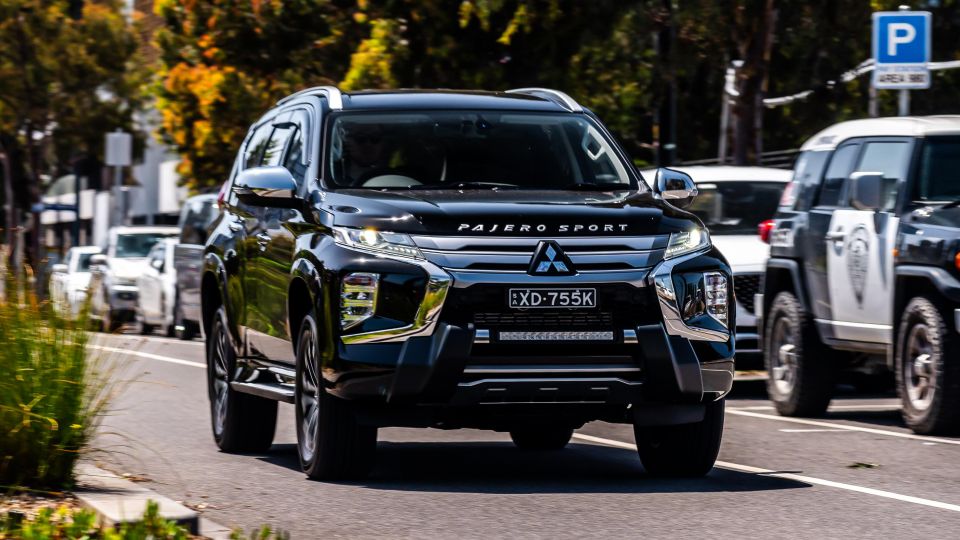
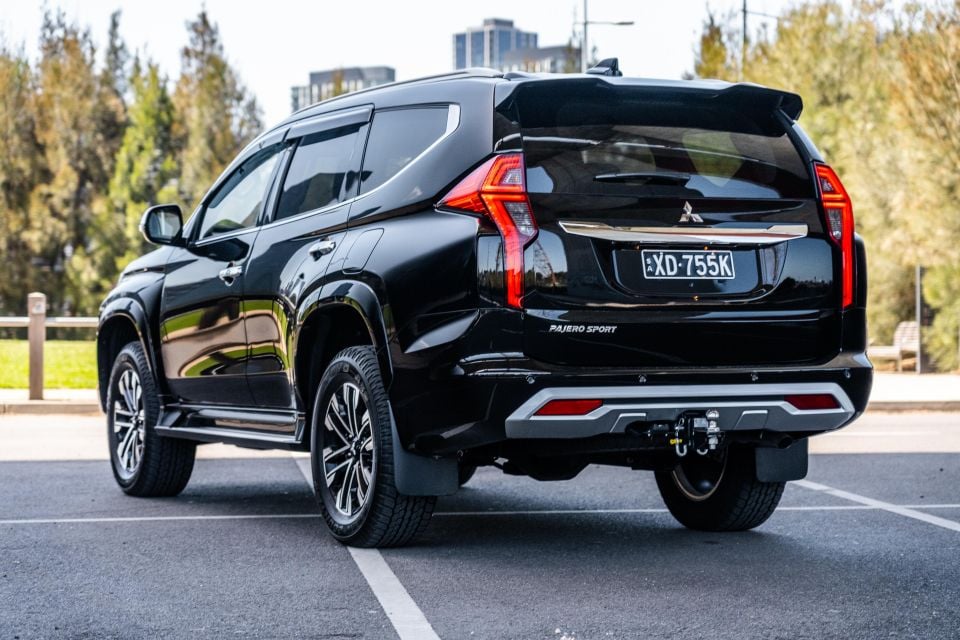

Quickly see how this car stacks up against its competition. Select any benchmark to see more details.
Where expert car reviews meet expert car buying – CarExpert gives you trusted advice, personalised service and real savings on your next new car.
Like its Triton sibling, the Mitsubishi Pajero Sport often loses the limelight to segment favourites – like the Ford Everest and Isuzu MU-X.

That’s not because it’s a bad vehicle, far from it. It remains one of the more sharply-priced entrants in the body-on-frame SUV class as rivals continue to push upmarket with their price positioning.
Mitsubishi has applied some running changes over the past couple of years or so, adding tyre pressure monitoring across the bulk of the line-up earlier this year and bringing in new entry-level and flagship variants the year prior.
While the Triton is about to enter a new generation in 2024, the next-gen Pajero Sport isn’t expected until at least 2025 according to a recent product roadmap – so the car you see here has some life in it yet.
On test we have the penultimate Exceed variant, which sits just under the blacked-out GSR but offers much of the same luxury and convenience equipment at a price point that will see you in a mid-spec rival.
Is it still worth a look in its twilight years?
The Pajero Sport Exceed 4×4 lists for $60,690 plus on-road costs. The company’s online configurator shows $63,740 drive-away based on a Melbourne postcode.
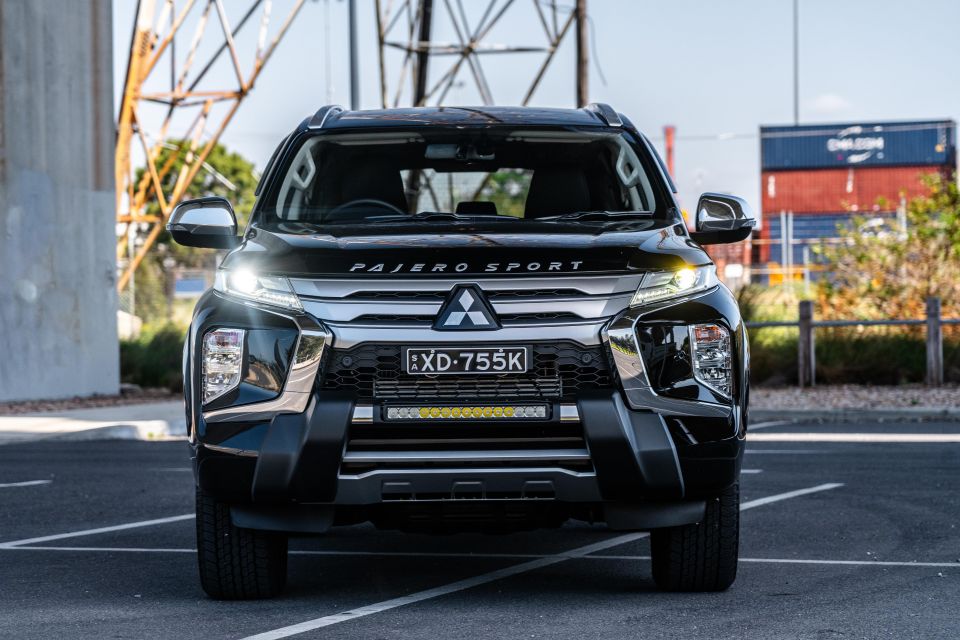
That money barely gets you into a base Everest Ambiente 4×4, or a mid-spec Isuzu MU-X LS-U 4×4. The updated SsangYong Rexton Ultimate is $58,000 plus on-roads, if you want a rival pick for value.
While it stacks up well on paper against the established favourites in the segment, even the base Everest and MU-X feature more comprehensive safety assist and infotainment tech suites, largely due to their relative youth compared to the Mitsi.
2024 Mitsubishi Pajero Sport pricing:
Prices are before on-road costs
Buy your new car without the stress. It's fast, simple and completely free.

Great service from Travis and team, second time I have used this business would not hesitate to recommend them to anyone
Craig C.
Purchased a Ford Ranger in Sunshine Coast, QLD
CarExpert helped Craig save thousands on his Ford Ranger, now let us save you on your next new car.
Find a dealMuch like it was when this generation first launched almost a decade ago.
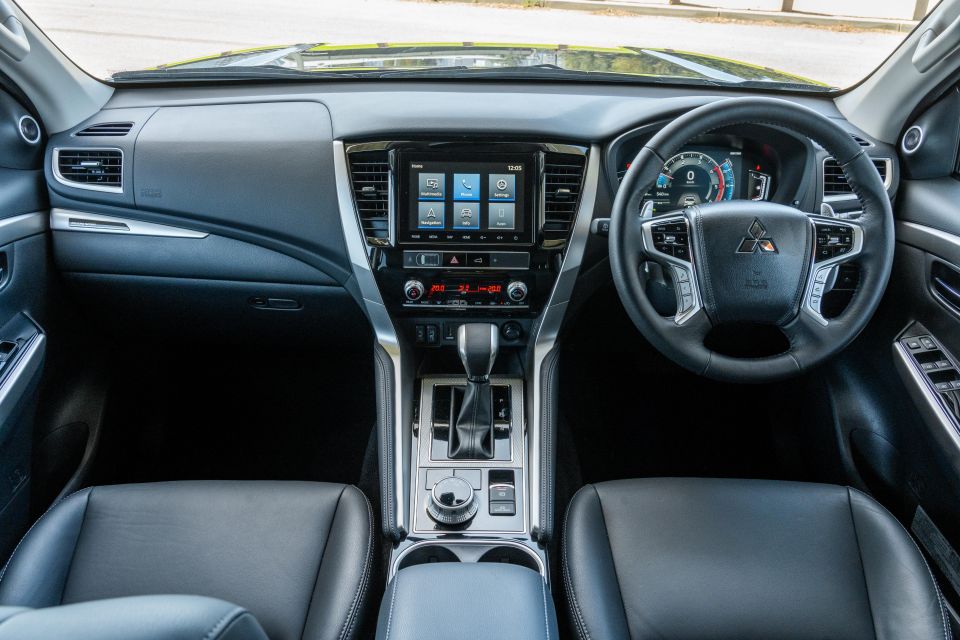
A digital instrument cluster and a bigger central touchscreen have been added over the vehicle’s life, but the design is otherwise largely the same – balancing utility and comfort reasonably well.
Compared to the outgoing Triton, the Pajero Sport was already a bit nicer largely due to the different centre console treatment that has a padded lining for your knees to rest on. The addition of a digital instrument cluster on high-spec models definitely lifts the ambience and is a marked improvement over Mitsubishi’s ageing analogue gauges.
The leather-wrapped steering wheel isn’t the smoothest or most supple hide, and the same goes for the seat trim which looks a bit like toad skin after a bit of wear.
Electric adjustment for the front seats is a nice touch, though the pews themselves aren’t the best in class when it comes to bolstering and support, particularly under your thigh if you have long legs like me. The slippery leather trim doesn’t really hold you in either.
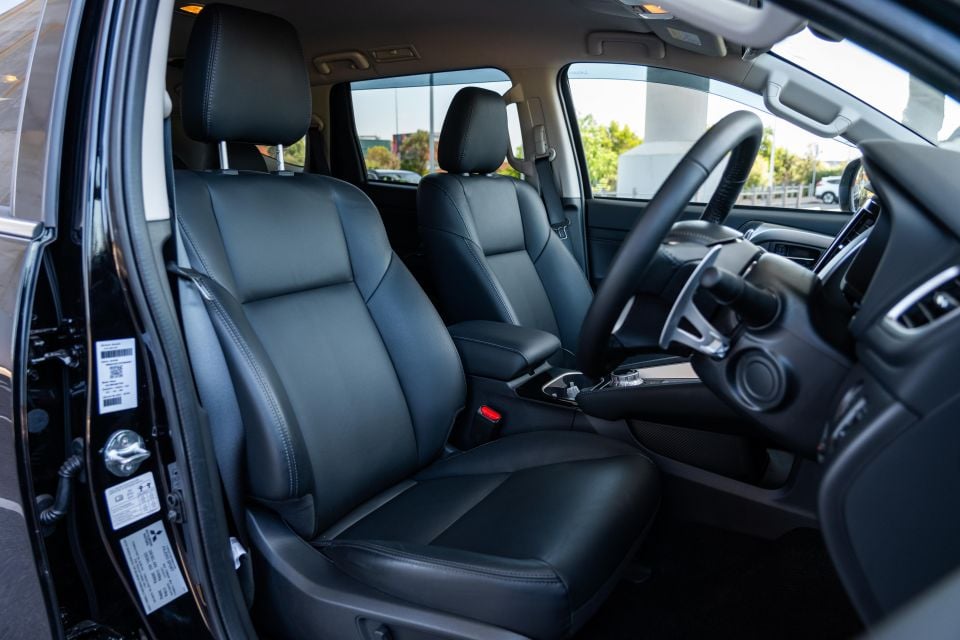
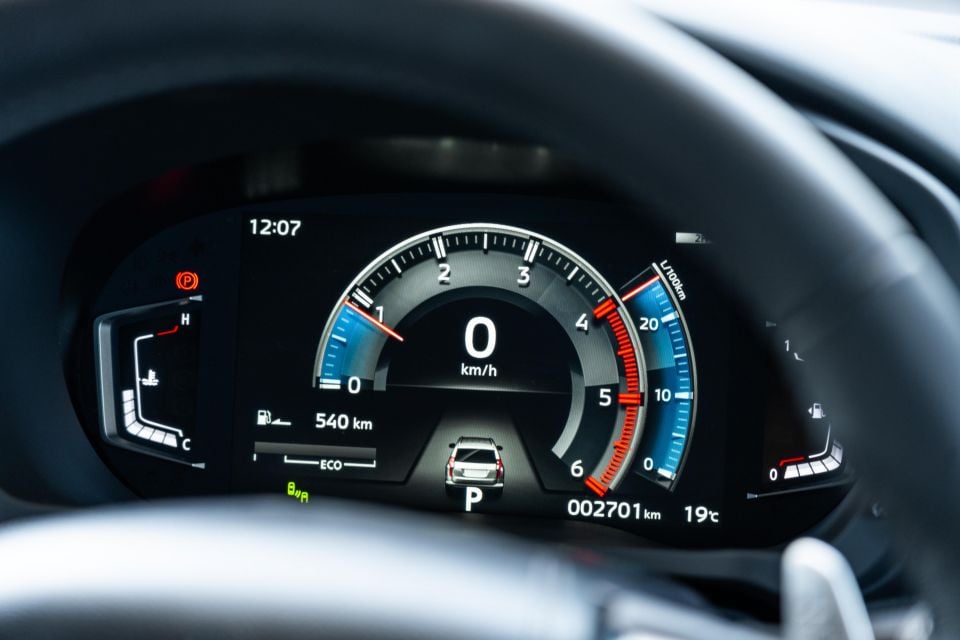
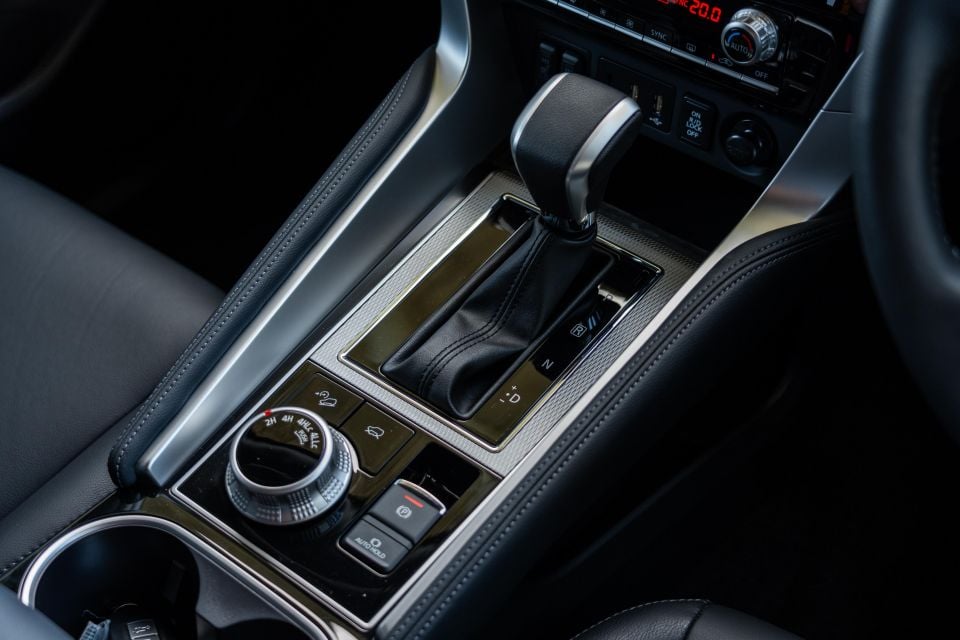
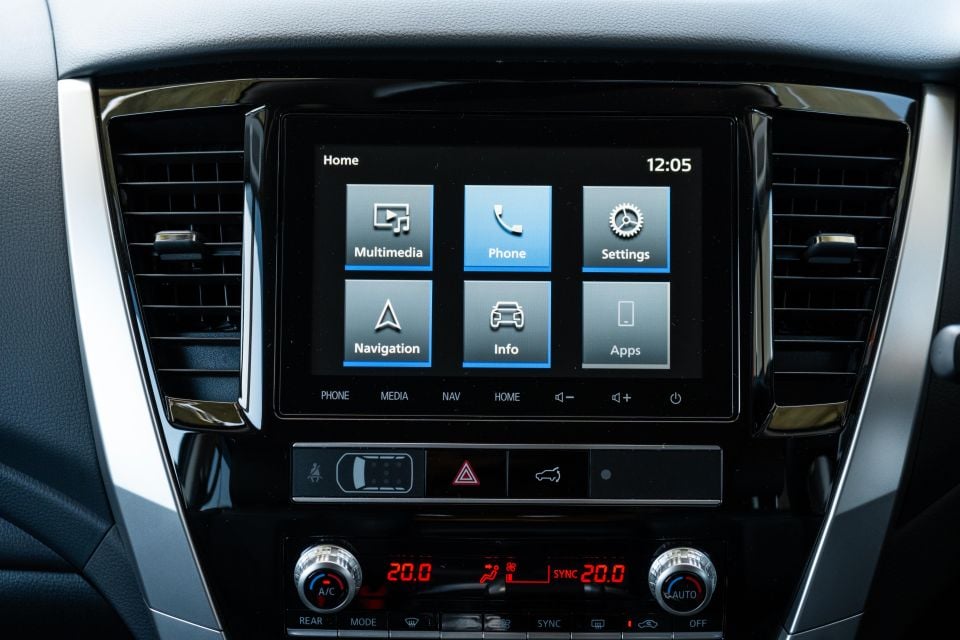
Overall, the layout and ergonomics are functional, if a little dated. Orange backlighting for the climate controls and swatches of piano black trim wouldn’t be my first pick (particularly the latter) as gloss black is prone to scuffs and scratches – especially in a vehicle like this.
It all feels pretty well screwed together; although, its commercial origins shine through in the materials used to line the cabin – no soft-touch surfaces in sight here. It’s all very durable and hard wearing, but far from plush or upmarket given the $60,000 price tag.
The 8.0-inch touchscreen features embedded TomTom navigation in higher grades like this Exceed, and also features a DAB radio tuner in addition to wired Apple CarPlay and Android Auto. While these are all handy box ticks on the spec sheet, the fact there’s nowhere to store your phone when it’s plugged in is simply an oversight.
Audio quality from the enhanced eight-speaker audio system is also fine, but there are better systems out there within the segment.
Storage is otherwise fine, with decent cupholders, a shelf under the centre stack for keys or a wallet, and shallow door bins with bottle holders. The front-centre armrest also acts as a lid to a decent cubby space as well.
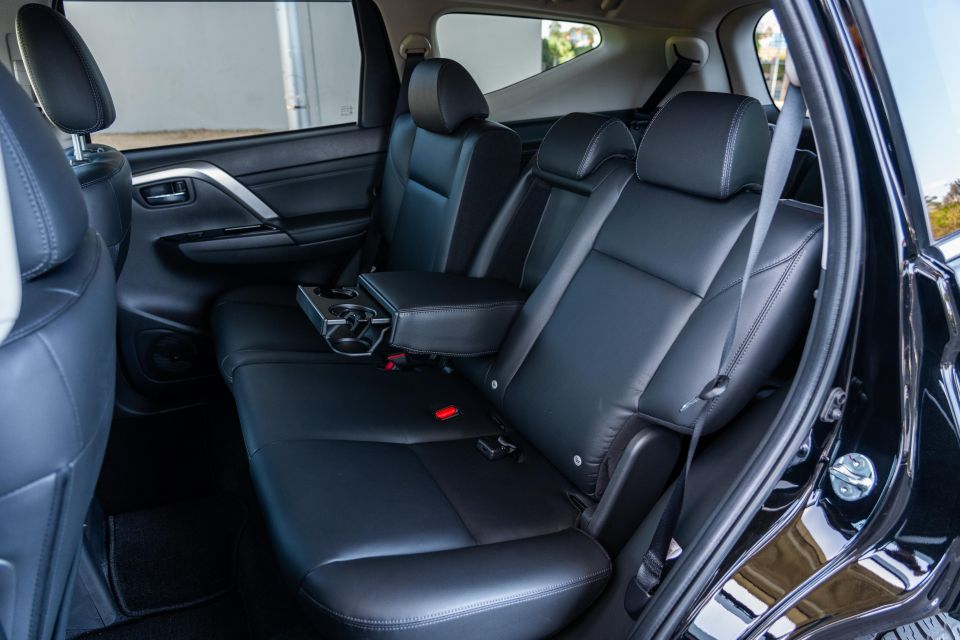

Hop into the back and there’s a good amount of space for adults, and kids will be more than happy back there.
Sturdy grab handles on the B-pillars and side steps make getting in easier, though it’s on the narrower side. The elevated seat height means head room is a bit tight for taller folk like some of my colleagues – though 6’1 me fits just fine.
Amenities include roof-mounted air vents and grab handles; rear USB ports (four in the cabin all up); and a handy 220V power socket. Plus there are pockets in each seat-back and a flip-down armrest with cupholders.
The third row is handy to have for emergencies, but is best suited to kids. The ‘sporty’ design also means those rearmost windows are quite small, meaning that smaller passengers may find them harder to see out of. The seats do fold down into the floor when not in use; though, as the pictures show not quite as neatly as numerous rival SUVs.
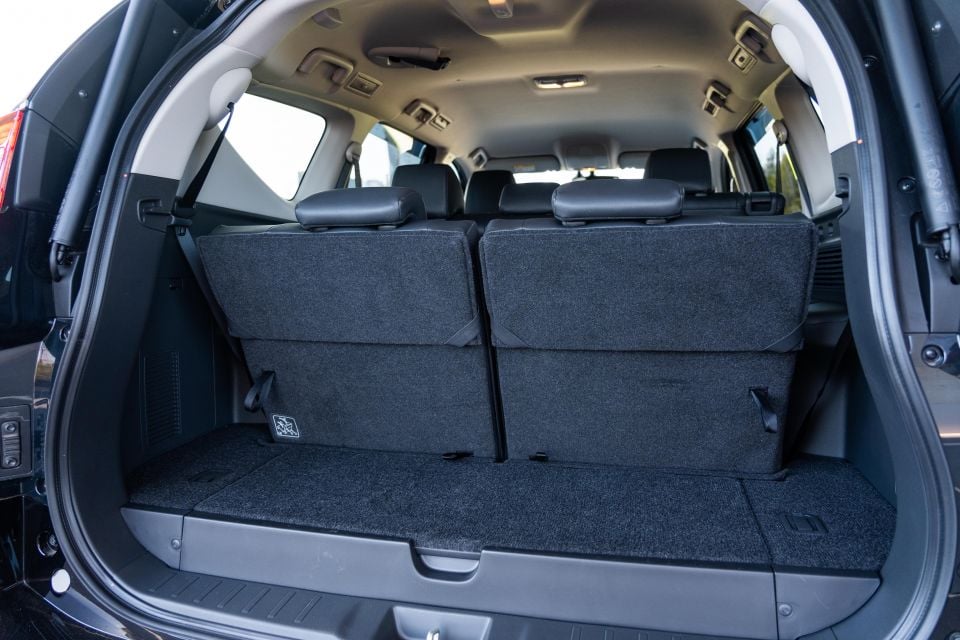
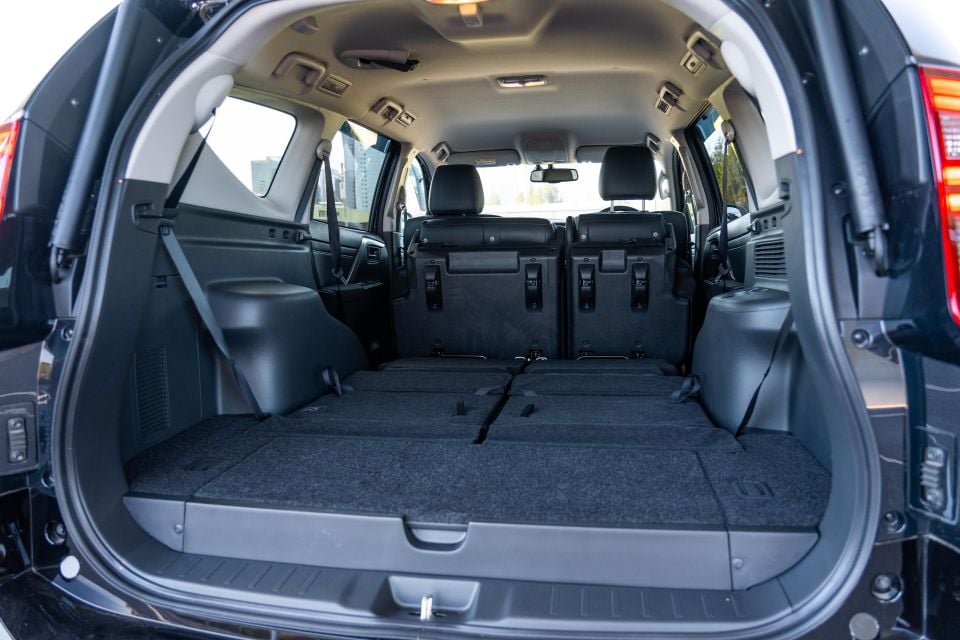
The extra seating row does impact boot space though. The base five-seat GLX has 673 litres of capacity; whereas, with the third row folded the seven-seater only has 502L.
With the third row in use this shrinks to 131L, and with both rows folded you get 1488L. The boot in five-seater mode measures 1370mm long by 885mm tall by 1000mm between the wheel arch covers. A full-size spare tyre is mounted beneath the vehicle.
Under the bonnet is a tried and tested 2.4-litre four-cylinder turbo-diesel.
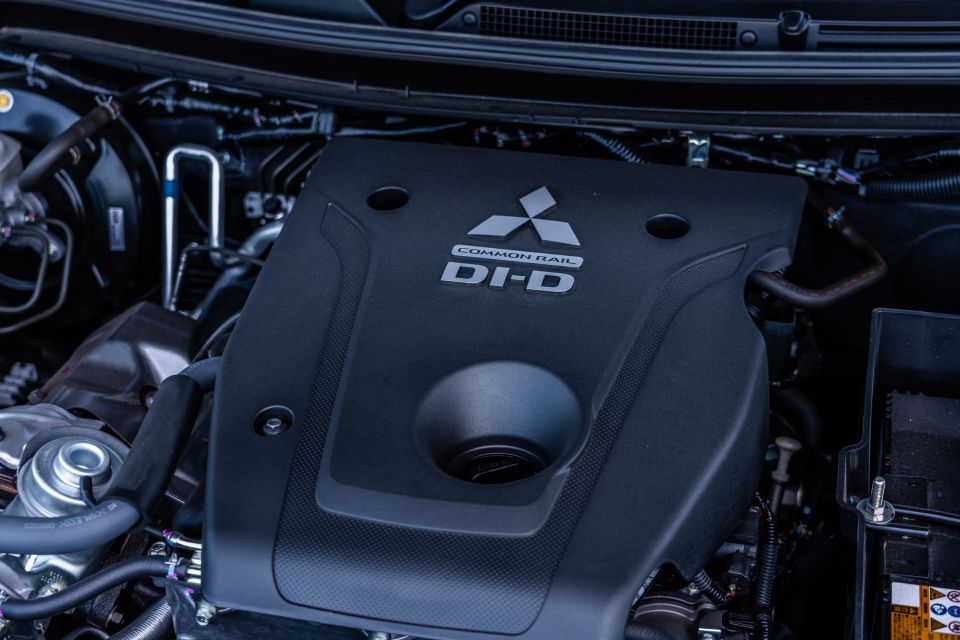
Outputs are rated at 133kW (3500rpm) and 430Nm (2500rpm), with drive in the Exceed sent to Mitsubishi’s Super Select 4WD system via an eight-speed automatic transmission with Evo-sourced paddle shifters.
The Pajero Sport is a bit down on grunt compared to rivals, which these days keep to a general benchmark of 150kW and 450-500Nm, and that’s reflected in vehicle performance as well as things like braked towing rating.
In our recent 4WD SUV Mega Test the Pajero Sport proved to be the slowest vehicle on test, with a leisurely 0-100km/h time of 12.61 seconds and a 10.17s window between 80 and 120km/h. It was the only vehicle to take more than 18 seconds to complete the 1/4 mile, also.
For reference, the MU-X was over a second quicker across all measurements, while the Everest Bi-Turbo was another half-second quicker again in all exercises.
Combined fuel consumption is rated at 8.0L/100km with CO2 emissions of 212g/km, while the fuel tank measures 68L. We averaged an indicated 8.1L/100km over 440km of mixed driving including plenty of daily commuting – not bad.
The Pajero Sport also is rated to tow up to 3100kg with a braked trailer, which is below the general benchmark of 3.5t in this segment. Towball download maximum is 310kg.
Not much has changed for the Pajero Sport throughout its life, perhaps bar the eight-speed auto that was introduced as part of the mid-life facelift a couple of years back.
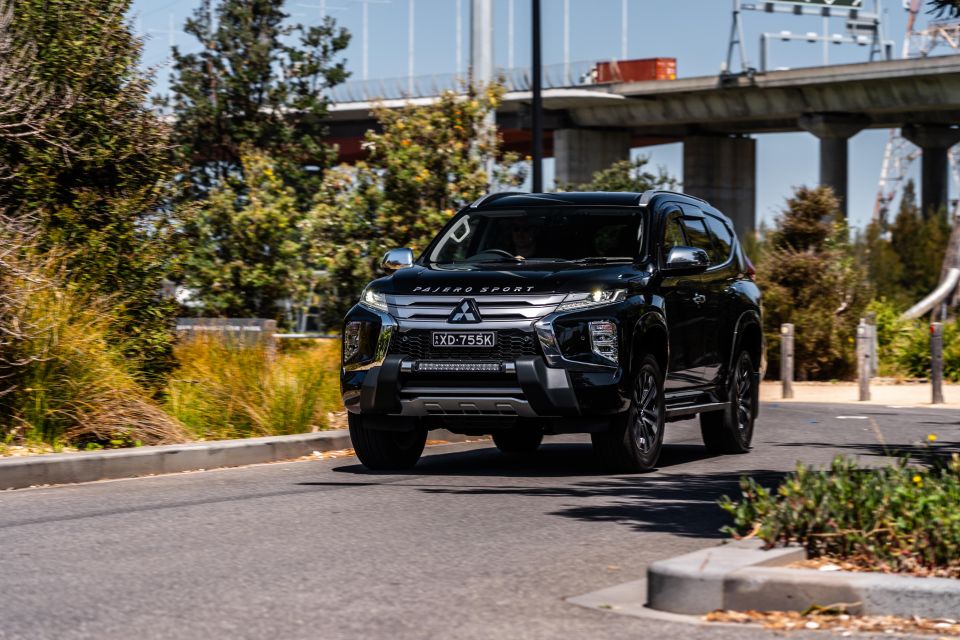
Being a little older than some of its rivals, general refinement of the powertrain isn’t up there with the best in segment. It has a rumbly diesel clatter on start-up and idle; although, it’s still not too bad all things considered.
In normal driving around town the Pajero Sport feels like most ladder-frame 4×4’s of its time; the controls are heavy, the diesel is lazy, and it lopes around like a big heavy thing.
That said, the eight-speed auto is pretty good at keeping the turbo-diesel in its torque band for driving in town and shifts very smoothly and reliably. You’d rarely feel the need to pull on one of the paddles in normal driving.
I spent most of my time in this commuting to and from the CarExpert Melbourne office during the week and while it felt like a step back in time, the Pajero Sport is one of the more agreeable 4×4’s in daily scenarios. For example, the old D-Max was a shocker to drive day to day, and the Everest was a bit clumsy, if nicely damped ride-wise.
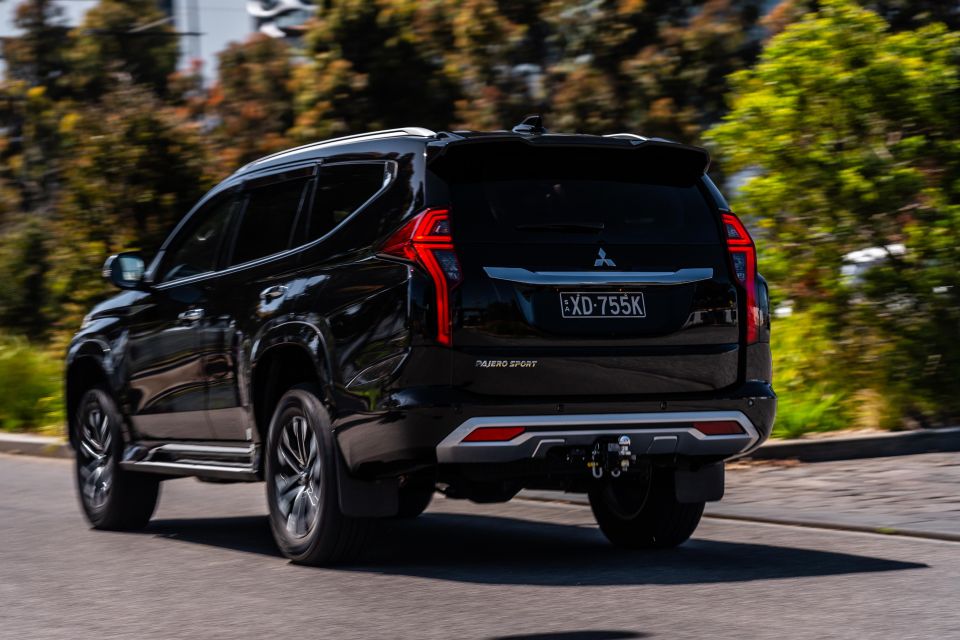
There’s a bit of noise from the diesel engine under acceleration regardless of the intensity, especially if you’re comparing the Pajero Sport to a car-based SUV like a Kia Sorento. Could be better, but could be worse.
At least performance is pretty responsive and linear as noted earlier. When stopped there’s no idle stop/start tech to save fuel and emissions and traffic, so you’re just left with the drone of the diesel clatter in city gridlock – dugdugdug.
Where the Pajero Sport starts to show off its strengths is on the highway, where the engine and transmission can settle into a quiet cruise. The ride settles with a more wafty feel rather than the wobbly and at times jittery vibe it can give you in town when the rugged suspension and big wheels hit tram tracks and potholes.
It’s not a match for the excellent locally-developed Everest, which almost feels like a luxury SUV at times, but given its age and price point the Pajero Sport does a solid job at touring, and you can see why it has proven popular with adventurous Australian familes.

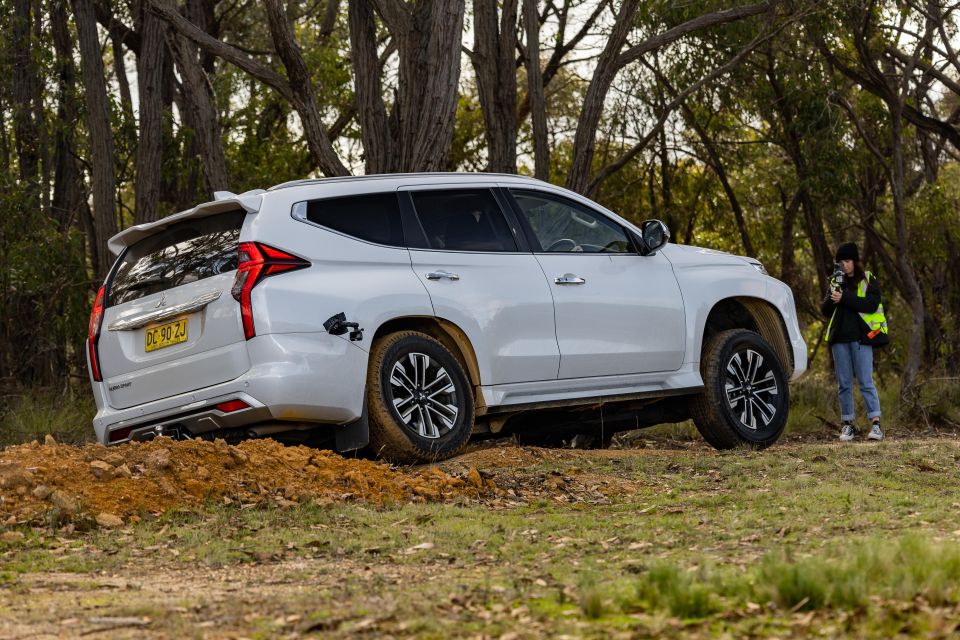
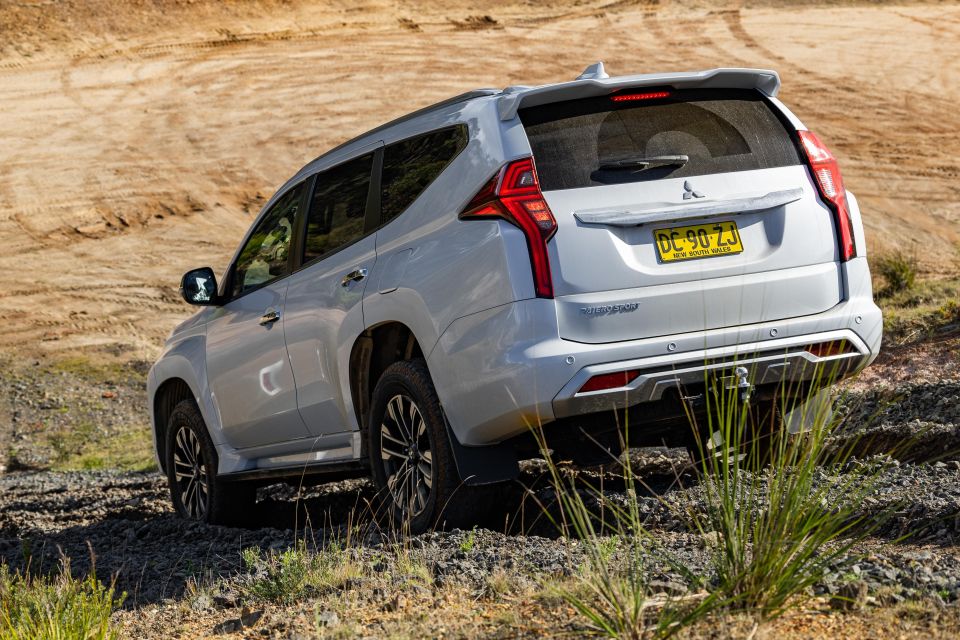
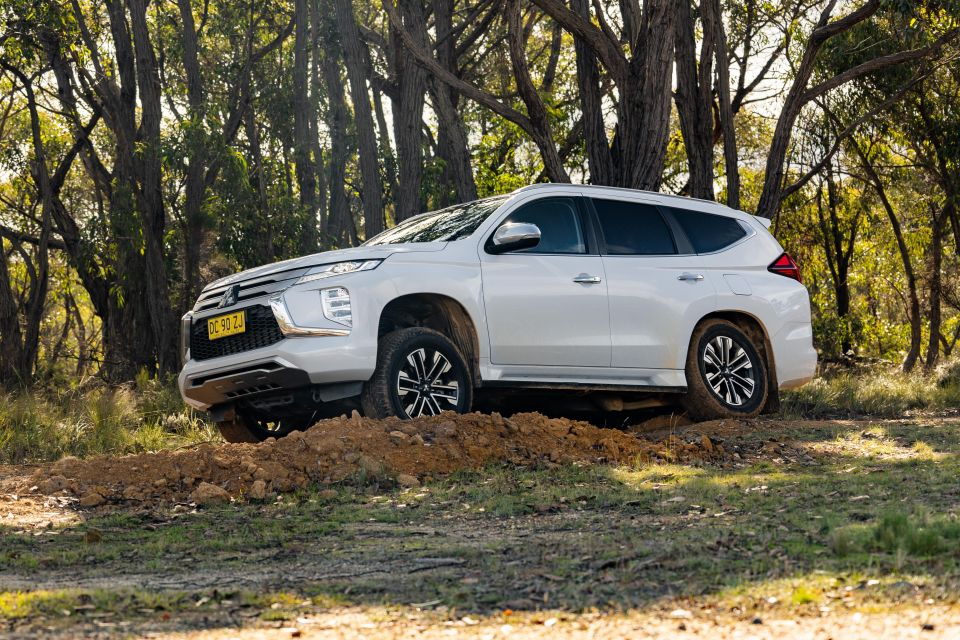
We didn’t take the Pajero Sport off the beaten track on this particular week, but we observed impressive results during the 4WD SUV Mega Test. There it performed reasonably well on the rollers, rolling back slightly in 2H before the traction control worked things out – it was very impressive in 4H, moving forward with barely any slip.
Its age showed in the flex test, where the door caught slightly on the body. It wasn’t the worst performer in that test, however. Mitsubishi’s traction control system walked the car out of the moguls with a minimum of fuss, even in the road-oriented 4A four-wheel drive setting. With 4H and Mud Mode engaged it was “even more effortless”.
It scaled Mogul Mountain without too much wheel slip, and the hill-descent control kept the car nice and controlled. Using the throttle you can make the car descend faster; although, you can’t use the cruise control buttons to do it as in some rivals.
Rev flaring was noticeable in the Pajero Sport going up Gravel Mountain, but it managed to scale the hill on the second attempt with its rear differential locked.

Driver assistance isn’t a particular strength for the big Mitsi, given it lags behind key rivals in terms of inclusions.
Standard adaptive cruise control works reasonably well, but only works until low speeds and then cancels itself. It doesn’t feature any form of stop/go or traffic jam assist functions like we’re seeing more of these days from rivals.
Likewise an active lane keeping assistant – or departure warning, for that matter. The Exceed and GSR are the only variants in the range to score blind-spot monitoring and rear cross-traffic alert systems, the former of which can detect a vehicle within 3.5 metres of the Pajero Sport’s side or 70m from the rear bumper.
You also pick up a Multi Around View Monitor in the Exceed and GSR, which is handy for visibility given the size of the vehicle but not the last word in resolution or clarity.
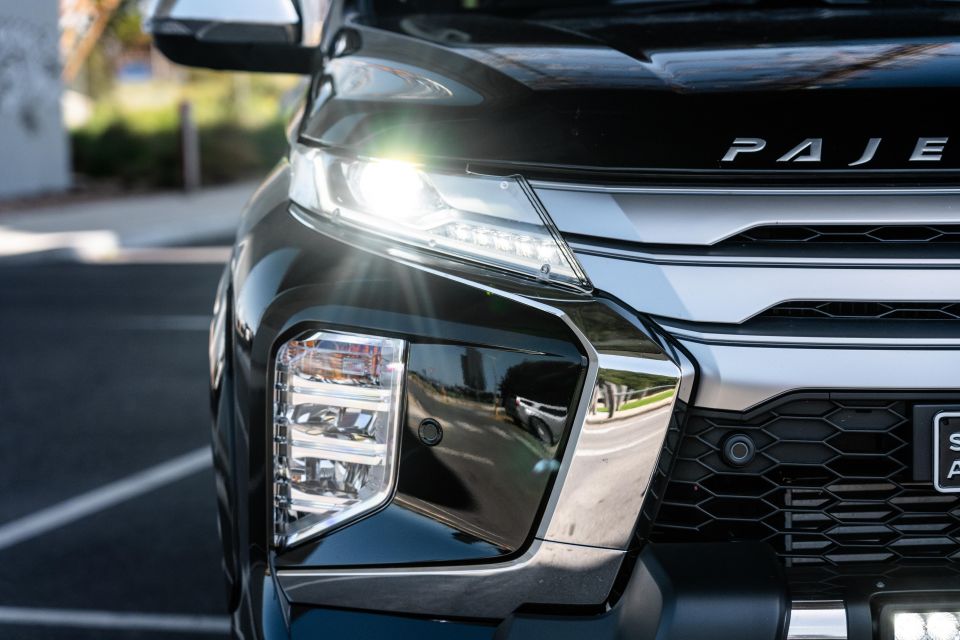
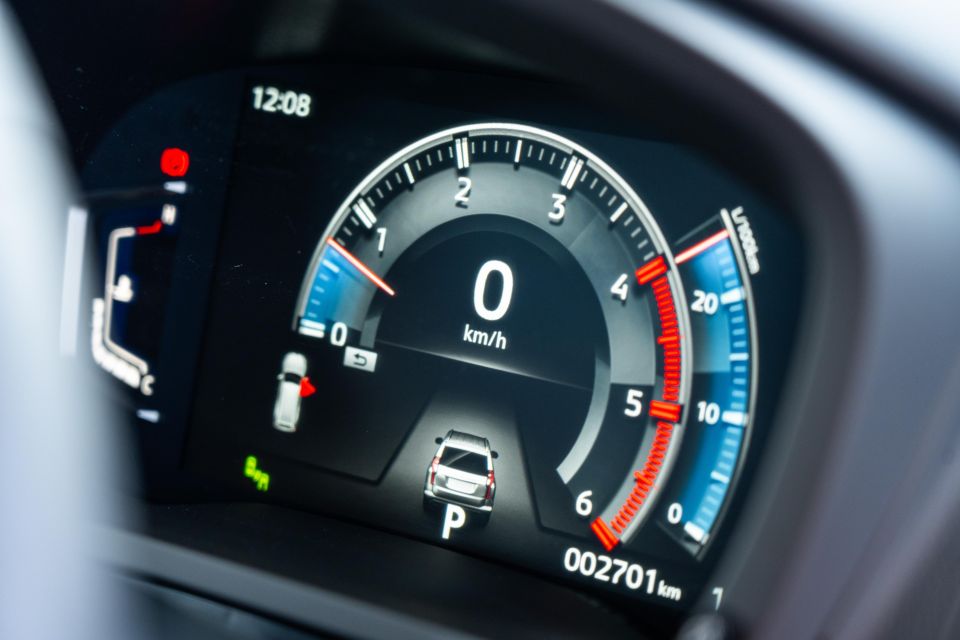
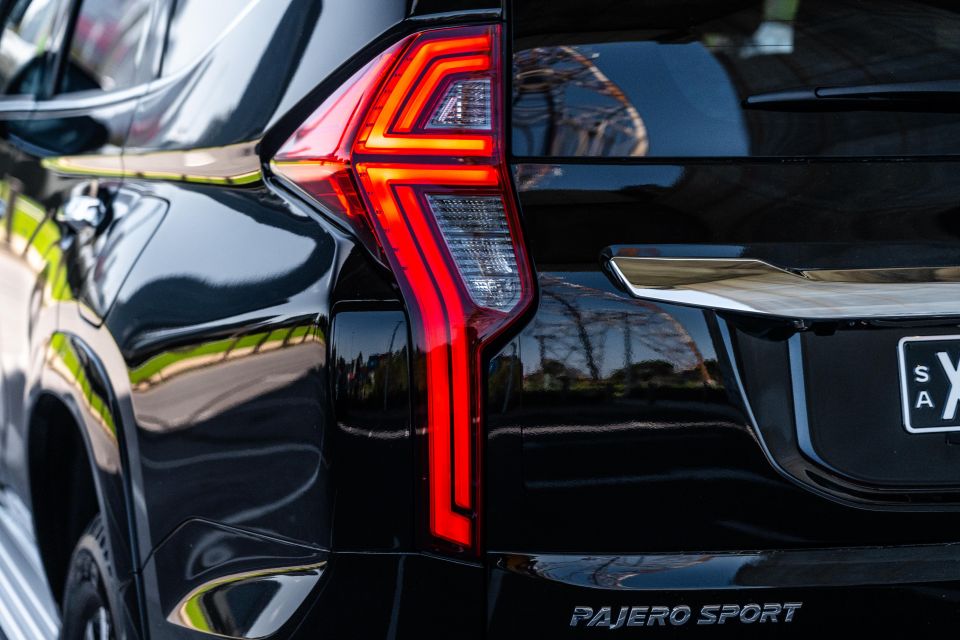

Pajero Sport GLX highlights:
Pajero Sport GLS adds:
Pajero Sport GLS ‘Deluxe’ pack ($2250) adds:
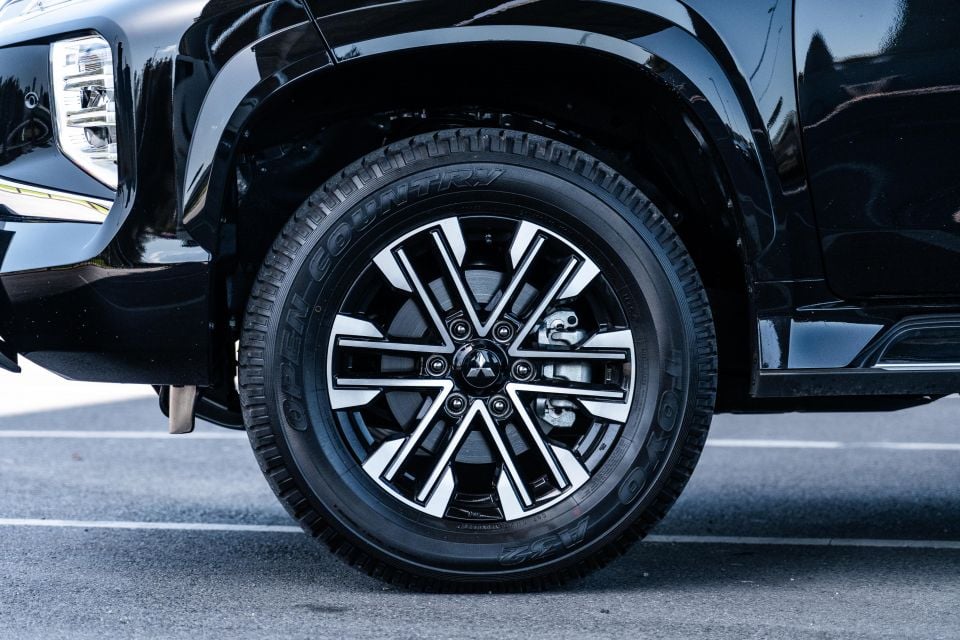
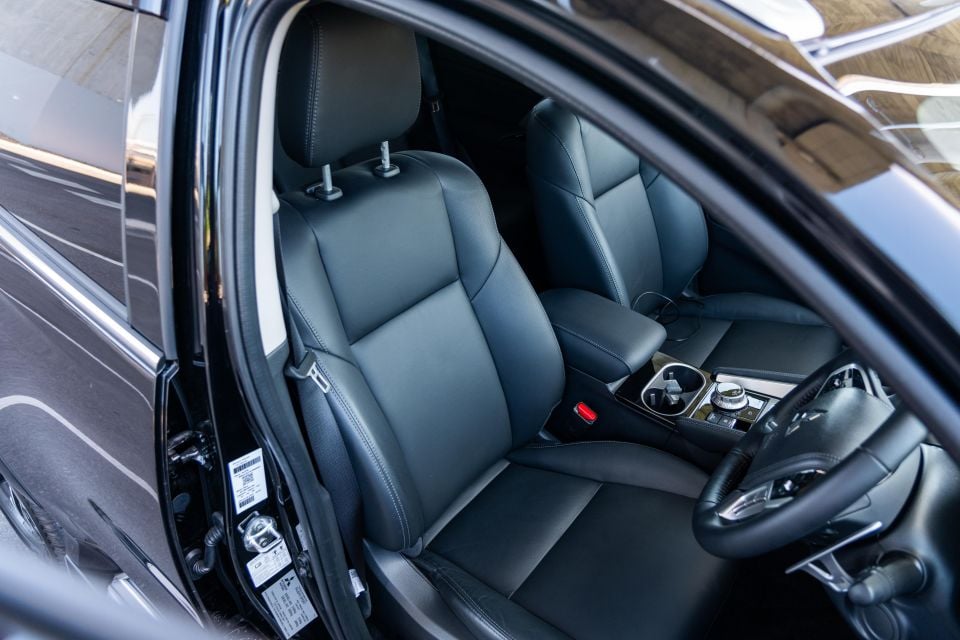
Where expert car reviews meet expert car buying – CarExpert gives you trusted advice, personalised service and real savings on your next new car.
Pajero Sport Exceed adds:
Pajero Sport GSR adds:
The Pajero Sport received a five-star ANCAP safety rating back in 2015, though the rating is now expired. It’s worth noting the crash score was also based on tests of the Triton ute.
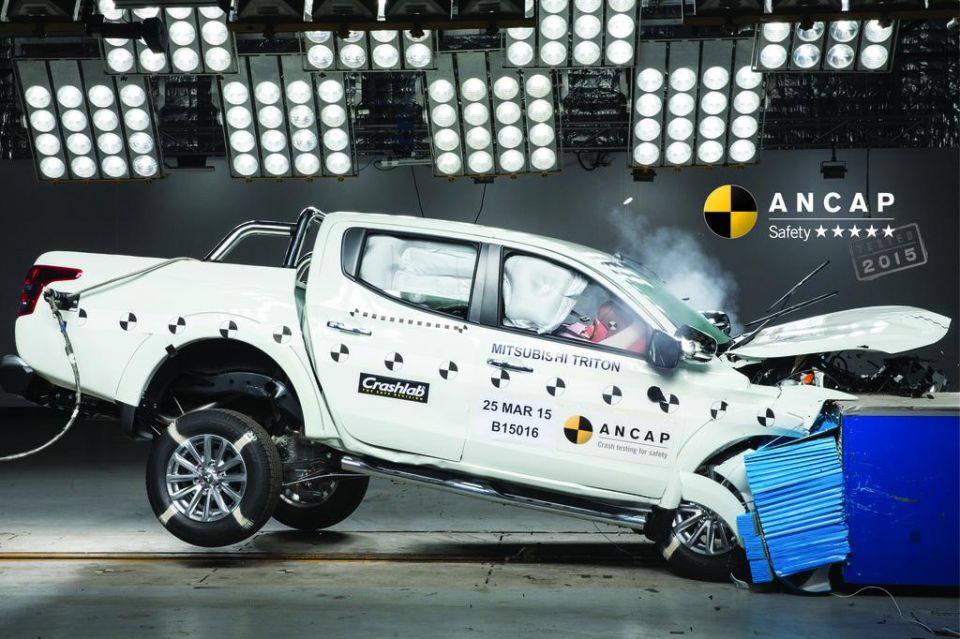
This rating was based on a frontal offset score of 15.22 out of 16 and a side impact score of 16 out of 16. Whiplash and pedestrian protection were rated Good and Acceptable, respectively.
Standard safety features include:
Pajero Sport Exceed adds:
Mitsubishi’s standard warranty covers five years or 100,000km, but so long as you return to one of its dealerships at each service this extends to 10 years or 200,000km.
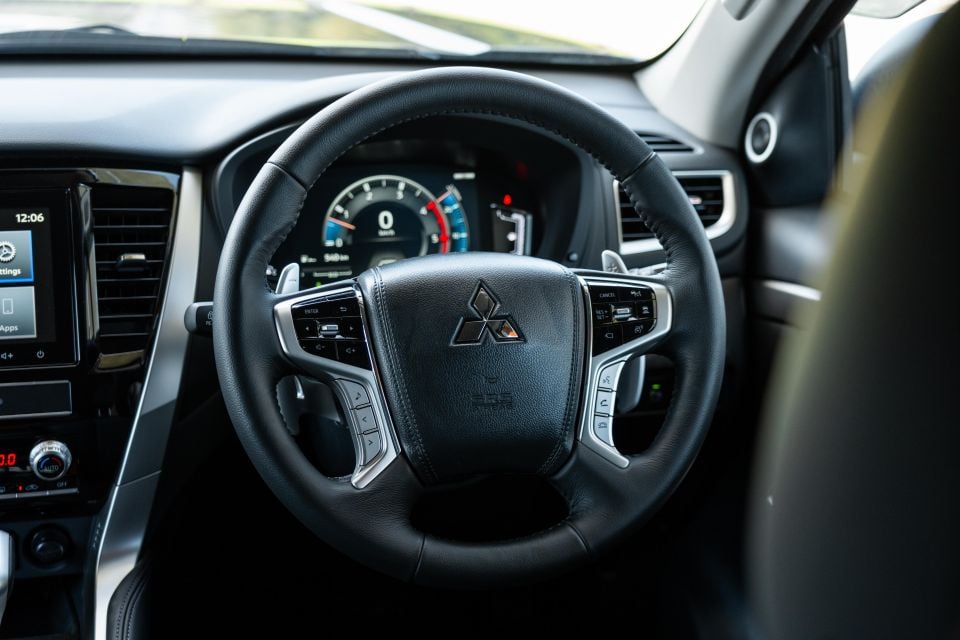
Servicing at dealerships also lets you take advantage of Mitsubishi’s 10 years of capped-price servicing. The Pajero Sport requires servicing every 12 months or 15,000km, whichever comes first.
Mitsubishi Pajero Sport service pricing:
The Pajero Sport puts in a solid showing, but it’s quickly being outpaced by newer competition.
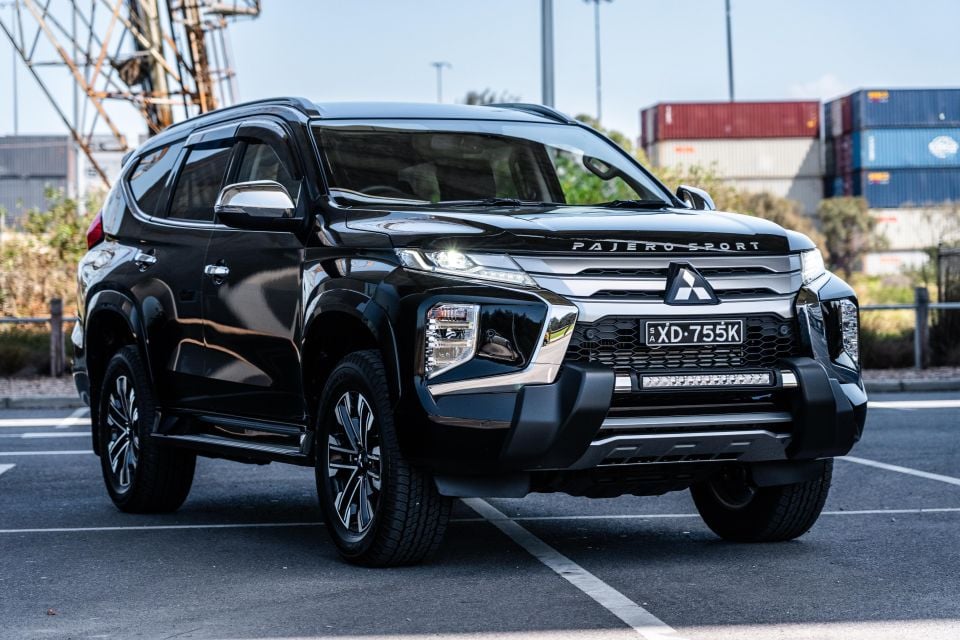
With rivals like the Ford Everest and Isuzu MU-X in the mix, the Pajero Sport isn’t necessarily one of my top picks in the 4×4 SUV segment – particularly in this higher specification given the price point.
You can cover more bases on the safety and tech fronts in lower grades of the Everest and MU-X for similar if not less money, combined with better performance and towing capability should those be priorities for you. The updated SsangYong Rexton will also feel more modern for less money.
But that’s not to say there isn’t a lot of good going on here. The Pajero Sport has remained popular for numerous reasons and like its Triton sibling, remains a solid and reliable option amongst its competitors by performing well across most metrics.
It’s very no-nonsense but drives with relative refinement and has plenty of capability out of the box to suite a wide range of needs. There’s also a very long warranty on the proviso you service the Pajero Sport within Mitsubishi’s national dealer network.
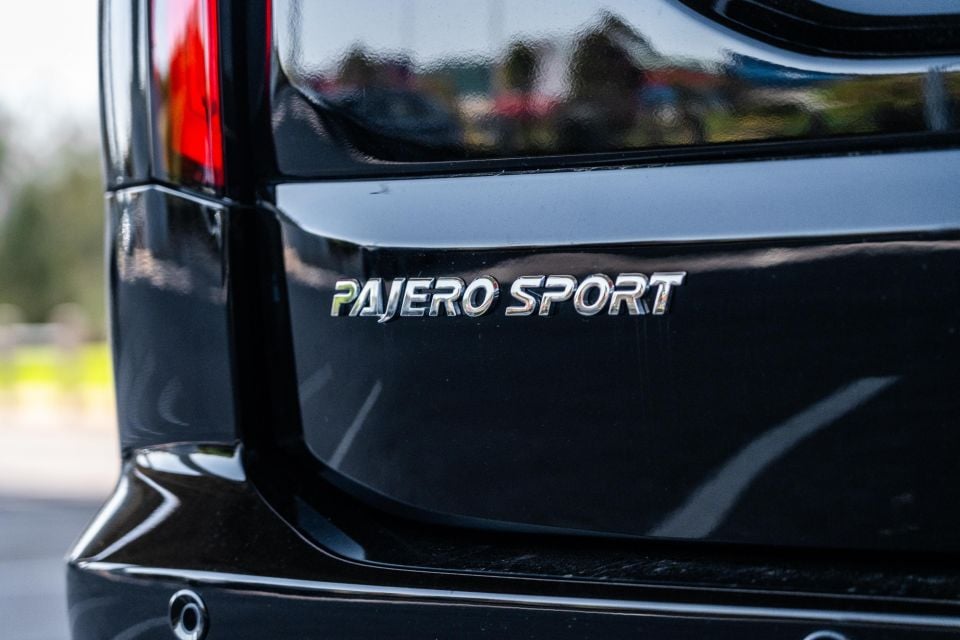
Click the images for the gallery
BUY: Mitsubishi Pajero Sport MORE: Everything Mitsubishi Pajero Sport
Where expert car reviews meet expert car buying – CarExpert gives you trusted advice, personalised service and real savings on your next new car.
James Wong is an automotive journalist and former PR consultant, recognised among Australia’s most prolific motoring writers.


Damion Smy
6 Hours Ago


Damion Smy
8 Hours Ago


Damion Smy
9 Hours Ago


Damion Smy
11 Hours Ago


Damion Smy
13 Hours Ago


Damion Smy
14 Hours Ago